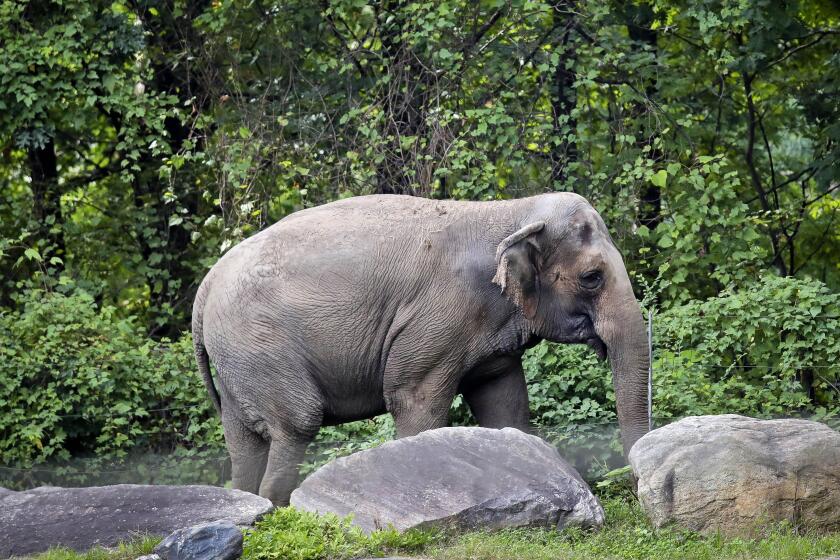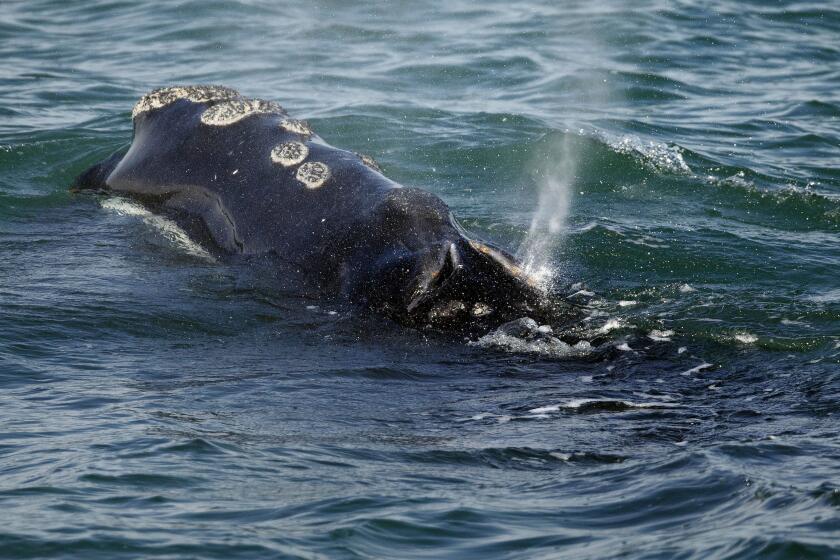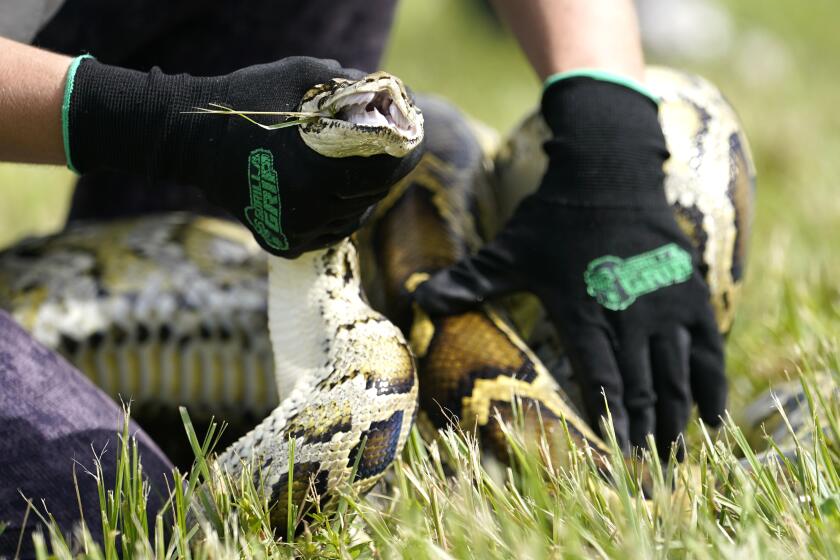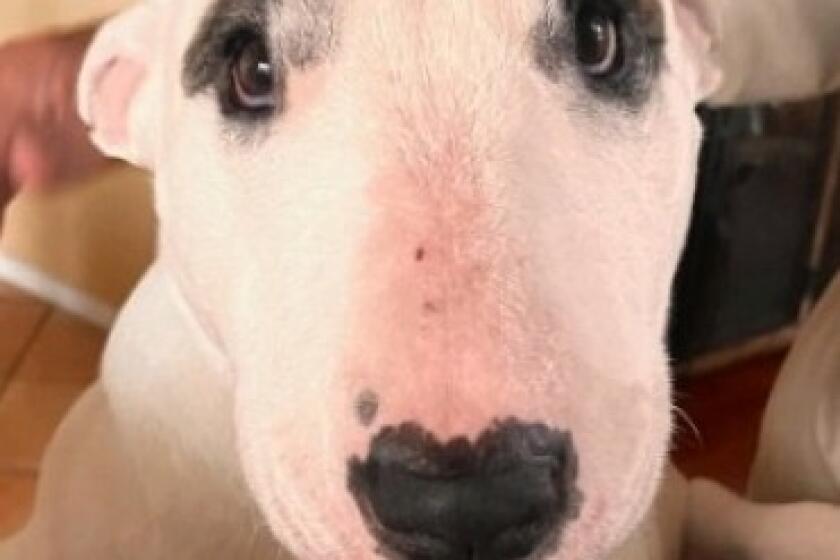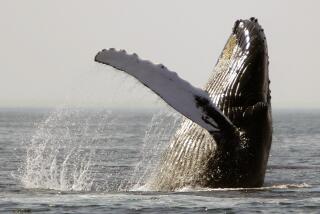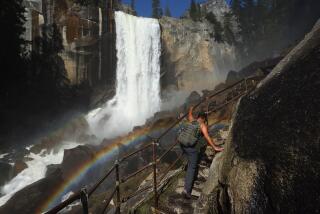Opinion: Coal mines had canaries. To see climate dangers, look to chickadees
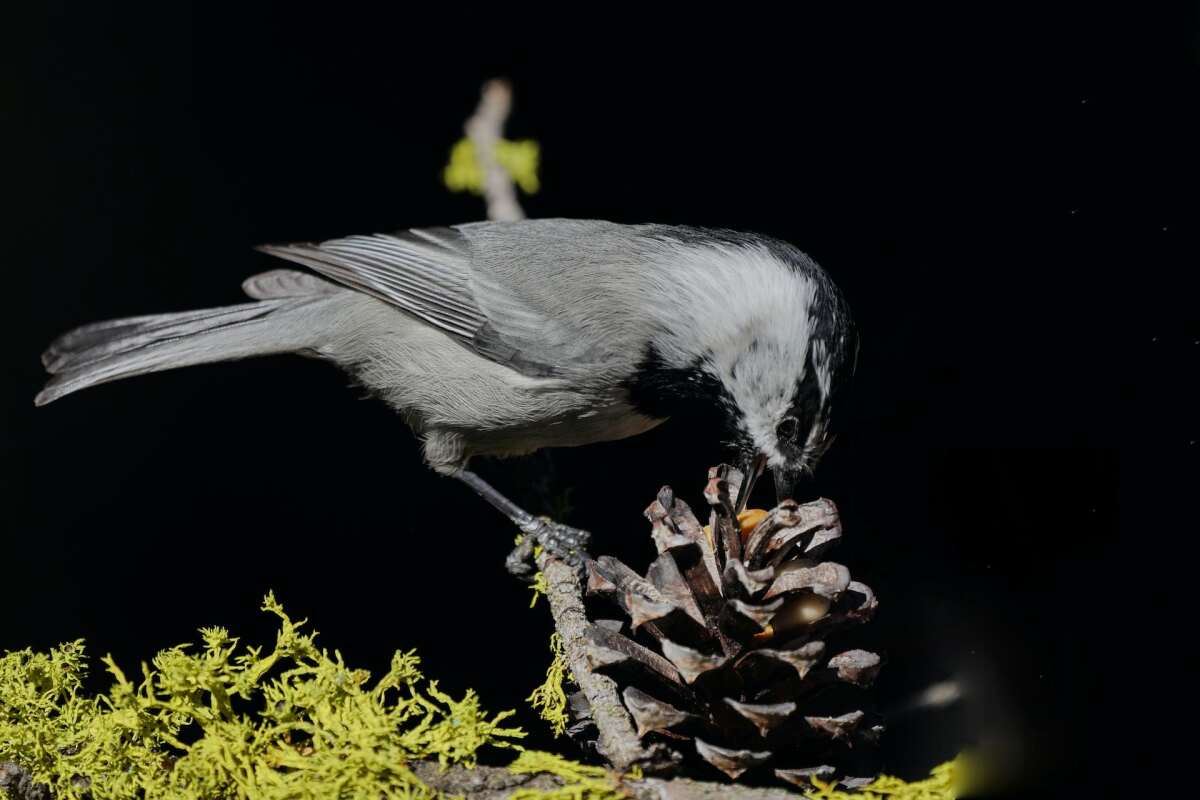
- Share via
I am pelted by wet snow as I climb above 8,000 feet in the Sierra Nevada of eastern California, tugging a sled loaded with batteries, bolts, wire and 40 pounds of sunflower seeds critical to our mountain chickadee research.
At the research site, I duck under a tarp and open a laptop to program “smart” bird feeders for an upcoming experiment with fellow behavioral ecologist Vladimir Pravosudov.
I have spent the past six years monitoring a population of mountain chickadees here, tracking their life cycles and, importantly, their memory, in a system Pravosudov established in 2013. The consistent record from this site has provided us with a unique window to observe how chickadees survive in extreme winter snowfall and to identify ecological patterns and changes.
Opinion: Why shouldn’t elephants have rights? They’re intelligent beings who can feel joy and sorrow
There’s a petition to release elephants from the Fresno Chaffee Zoo, and Ojai recently became the first U.S. city to recognize legal rights for nonhuman animals. California can lead on this issue.
In recent history, intense winters are often followed by drought years here in the Sierra Nevada and in much of the U.S. West. This pattern has been identified as one of the unexpected symptoms of climate change, and its impact on the chickadees is providing an early warning of the disruptions ahead within these coniferous forest ecosystems.
As my legs get colder and wetter in the mountain snow, a charming and chipper “DEE DEE DEE” chimes down from a nearby tree. How is it that a bird weighing barely more than a few sheets of paper is more comfortable in this storm than I am?
The answer comes down to the chickadees’ incredible spatial cognitive abilities.
Cognition is how animals acquire, process, store and act on information from their environment. It is critical to many species but often subtle and difficult to measure in nonhuman animals.
New research shows how marine heat waves are forcing species to relocate, creating challenges for both the countries that are losing animals and the countries receiving them.
Chickadees are food-storing specialists that hide tens of thousands of individual food items throughout the forest under edges of tree bark, or even between pine needles, each fall. To survive, they use their specialized spatial memory to retrieve those food caches in the harsh winter months.
We measure the spatial memory of chickadees by hanging a circular array of eight feeders equipped with radio-frequency identification and filled with seed in several locations across our field site. Birds are tagged with transponder tags in leg bands that contain individual identification numbers and allow them to open the doors of their assigned feeders to get a food reward — if they remember which feeder is theirs.
Over eight years, our findings demonstrate that chickadees with better spatial memory ability are more likely to survive in the high mountains than those with worse memories.
A string of animal encounters in the news — the 19-foot python in Florida, the surfboard-stealing otter in Santa Cruz — add up to a disturbing message.
However, chickadees may be facing increasing challenges that will shape their future in the mountains. In 2017, a year with record-breaking snow levels, adult chickadees showed the lowest probability of survival ever measured at our site. This exceptionally extreme winter made it difficult for even the memory-savvy chickadees to forage and survive.
Nevertheless, triumphant populations have persisted in high-elevation mountain environments, but their future is becoming uncertain.
The Sierra Nevada and other mountain ranges in western North America have been experiencing “weather whiplash” — more extreme snow years and drought years, amplified by climate change. In 2023’s record winter, over 17 feet of snow covered the landscape that our chickadees were using every day. The intense storms and cold temperatures not only made it difficult for birds to survive the winter, they made it almost impossible for the chickadees to breed the next summer: 46% of nests at our higher elevation site failed to produce any offspring.
Even in years of tremendous snowfall, chickadees can still use their finely honed spatial memories to recover food. However, severe storms can shorten their survival odds. And if they do survive the winter, their nesting sites — tree cavities — may be buried under feet of snow in the spring.
It doesn’t matter how smart you are if you can’t reach your nest.
Extreme snow oscillations also affect insects that are critical for feeding chickadee chicks. Limited resources lead to smaller chickadee offspring that are less likely to survive high in the mountains.
Snow cover is good for overwintering insects in most cases, as it provides an insulating blanket that saves them from dying during those freezing months. However, if the snow persists too long into the summer, insects can run out of energy and die before they can emerge, or they emerge after chickadees really need them. Drought years also can drive insect population decline.
We felt like our adopted dog was a gun with no safety and worried she’d hurt someone.
These compounded effects mean that in some years chickadees simply don’t successfully nest at all. This leads to a decline in chickadee populations in years with worse whiplash — drought followed by high snow on repeat — especially at high elevations. This is especially concerning, as many mountain-dwelling avian species are forecasted to move up in elevation to escape warming temperatures, which may turn out to be hazardous.
Chickadees may be portrayed as radiating tranquil beauty on holiday cards, but realistically, these loud, round ruffians are tough survivors of harsh winter environments in northern latitudes. When the symptoms of climate change reach such extremes that they can’t make it, we should all take notice.
Benjamin Sonnenberg is a PhD candidate in ecology, evolution and conservation biology at University of Nevada, Reno. This article was produced in partnership with the Conversation.
More to Read
A cure for the common opinion
Get thought-provoking perspectives with our weekly newsletter.
You may occasionally receive promotional content from the Los Angeles Times.
